#sioux
Photo

Sioux Warrior Rain-in-the-Face (Eastman's Biography)
Rain-in-the-Face (Ite Omagazu, l. c. 1835-1905) was a Lakota Sioux warrior and war chief during Red Cloud's War (1866-1868) and at the Battle of the Little Bighorn (1876), after which he became famous as the man who killed Lt. Col. George Armstrong Custer, his brother Capt. Thomas Custer, or both of them.
How Rain-in-the-Face first became identified as Custer's killer is unclear, but the claim was popularized by the poem The Revenge of Rain-in-the-Face by Henry Wadsworth Longfellow – the bestselling American poet of his age – published in Keramos and Other Poems (1878). Although modern-day writers cite the poem as claiming Rain-in-the-Face killed Thomas Custer, it seems clear "White Chief with yellow hair" (line 9 of the poem) alludes to George Custer, and it is George's heart, not Thomas's, that Rain-in-the-Face rides off with at the end of the piece.
Rain-in-the-Face is best known today from two accounts of his life and the part he played at the Battle of the Little Bighorn – the 1894 report given by American journalist W. Kent Thomas based on an "interview" given at Coney Island, and the 1905 biography by the Sioux author and physician Charles A. Eastman (also known as Ohiyesa, l. 1858-1939) – which contradict each other.
In the Thomas interview, Rain-in-the-Face claims he killed Thomas Custer, cut out his heart, and spat part of it in his face at Little Bighorn as revenge for being unjustly arrested by Capt. Custer in 1874. In Eastman's account, he denies killing either of the brothers and, further, describes the Battle of Little Bighorn as so chaotic no one could have known who they had killed for certain.
As the W. Kent Thomas interview was given after the journalist got Rain-in-the-Face drunk, for the express purpose of getting the "real story" on Custer's death, while Eastman's account is a respectful transcript of the old warrior's life story, the latter is usually understood as more historically accurate.
Text
The following is taken from Eastman's Indian Heroes and Great Chieftains (1916), the 1939 edition, republished in 2016. It has been edited in the interests of space, but the full account will be found below in the External Links section.
The noted Sioux warrior, Rain-in-the-Face, whose name once carried terror to every part of the frontier, died at his home on the Standing Rock reserve in North Dakota on September 14, 1905. About two months before his death, I went to see him for the last time, where he lay upon the bed of sickness from which he never rose again, and drew from him his life-history.
It had been my experience that you cannot induce an Indian to tell a story, or even his own name, by asking him directly.
"Friend," I said, "even if a man is on a hot trail, he stops for a smoke! In the good old days, before the charge there was a smoke. At home, by the fireside, when the old men were asked to tell their brave deeds, again the pipe was passed. So come, let us smoke now to the memory of the old days!"
He took of my tobacco and filled his long pipe, and we smoked. Then I told an old mirthful story to get him in the humor of relating his own history.
The old man lay upon an iron bedstead, covered by a red blanket, in a corner of the little log cabin. He was all alone that day; only an old dog lay silent and watchful at his master's feet.
Finally, he looked up and said with a pleasant smile:
"True, friend; it is the old custom to retrace one's trail before leaving it forever! I know that I am at the door of the spirit home.
"I was born near the forks of the Cheyenne River, about seventy years ago…When I was a boy, I loved to fight," he continued. "In all our boyish games I had the name of being hard to handle, and I took much pride in the fact.
"I was about ten years old when we encountered a band of Cheyenne. They were on friendly terms with us, but we boys always indulged in sham fights on such occasions, and this time I got in an honest fight with a Cheyenne boy older than I. I got the best of the boy, but he hit me hard in the face several times, and my face was all spattered with blood and streaked where the paint had been washed away. The Sioux boys whooped and yelled:
"‘His enemy is down, and his face is spattered as if with rain! Rain-in-the-Face! His name shall be Rain-in-the-Face!'
"Afterwards, when I was a young man, we went on a warpath against the Gros Ventres. We stole some of their horses but were overtaken and had to abandon the horses and fight for our lives. I had wished my face to represent the sun when partly covered with darkness, so I painted it half black, half red. We fought all day in the rain, and my face was partly washed and streaked with red and black: so again, I was christened Rain-in-the-Face. We considered it an honorable name.
"I had been on many warpaths, but was not especially successful until about the time the Sioux began to fight with the white man…
"Some , Crow King, and others.
"This was the plan decided upon after many councils. The main war party lay in ambush, and a few of the bravest young men were appointed to attack the woodchoppers who were cutting logs to complete the building of the fort. We were told not to kill these men, but to chase them into the fort and retreat slowly, defying the white men; and if the soldiers should follow, we were to lead them into the ambush. They took our bait exactly as we had hoped! It was a matter of a very few minutes, for every soldier lay dead in a shorter time than it takes to annihilate a small herd of buffalo.
"This attack was hastened because most of the Sioux on the Missouri River and eastward had begun to talk of suing for peace. But even this did not stop the peace movement. The very next year a treaty was signed at Fort Rice, Dakota Territory, by nearly all the Sioux chiefs, in which it was agreed on the part of the Great Father in Washington that all the country north of the Republican River in Nebraska, including the Black Hills and the Big Horn Mountains, was to be always Sioux country, and no white man should intrude upon it without our permission. Even with this agreement Sitting Bull and Crazy Horse were not satisfied, and they would not sign…
"It was when the white men found the yellow metal in our country, and came in great numbers, driving away our game, that we took up arms against them for the last time. I must say here that the chiefs who were loudest for war were among the first to submit and accept reservation life. Spotted Tail was a great warrior, yet he was one of the first to yield, because he was promised by the Chief Soldiers that they would make him chief of all the Sioux. Ugh! He would have stayed with Sitting Bull to the last had it not been for his ambition.
"About this time, we young warriors began to watch the trails of the white men into the Black Hills, and when we saw a wagon coming, we would hide at the crossing and kill them all without much trouble. We did this to discourage the whites from coming into our country without our permission…
"There were a few Indians who were liars, and never on the warpath, playing ‘good Indian' with the Indian agents and the war chiefs at the forts. Some of this faithless set betrayed me and told more than I ever did. I was seized and taken to the fort near Bismarck, North Dakota of the Long-Haired War Chief and imprisoned there. These same lying Indians, who were selling their services as scouts to the white man, told me that I was to be shot to death, or else hanged upon a tree. I answered that I was not afraid to die.
"However, there was an old soldier who used to bring my food and stand guard over me—he was a white man, it is true, but he had an Indian heart! He came to me one day and unfastened the iron chain and ball with which they had locked my leg, saying by signs and what little Sioux he could muster:
"‘Go, friend! Take the chain and ball with you. I shall shoot, but the voice of the gun will lie.'
"When he had made me understand, you may guess that I ran my best! I was almost over the bank when he fired his piece at me several times, but I had already gained cover and was safe. I have never told this before, and would not, lest it should do him an injury, but he was an old man then, and I am sure he must be dead long since. That old soldier taught me that some of the white people have hearts," he added, quite seriously.
"I went back to Standing Rock in the night, and I had to hide for several days in the woods, where food was brought to me by my relatives…
"In the spring the hostile Sioux got together again upon the Tongue River. It was one of the greatest camps of the Sioux that I ever saw…We had decided to fight the white soldiers until no warrior should be left."
At this point Rain-in-the-Face took up his tobacco pouch and began again to fill his pipe…
"There was excitement among the people, and a great council was held. Many spoke. I was asked the condition of those Indians who had gone upon the reservation, and I told them truly that they were nothing more than prisoners. It was decided to go out and meet Three Stars at a safe distance from our camp.
"We met him on the Little Rosebud. I believe that if we had waited and allowed him to make the attack, he would have fared no better than Custer. He was too strongly fortified where he was, and I think, too, that he was saved partly by his Indian allies, for the scouts discovered us first and fought us first, thus giving him time to make his preparations. I think he was more wise than brave! After we had left that neighborhood, he might have pushed on and connected with the Long-Haired Chief. That would have saved Custer and perhaps won the day.
"When we crossed from Tongue River to the Little Big Horn, on account of the scarcity of game, we did not anticipate any more trouble. Our runners had discovered that Crook had retraced his trail to Goose Creek, and we did not suppose that the white men would care to follow us farther into the rough country.
"Suddenly the Long-Haired Chief appeared with his men! It was a surprise."
"What part of the camp were you in when the soldiers attacked the lower end?" I asked.
"I had been invited to a feast at one of the young men's lodges . There was a certain warrior who was making preparations to go against the Crows, and I had decided to go also," he said.
"While I was eating my meat, we heard the war cry! We all rushed out and saw a warrior riding at top speed from the lower camp, giving the warning as he came. Then we heard the reports of the soldiers' guns, which sounded differently from the guns fired by our people in battle.
"I ran to my teepee and seized my gun, a bow, and a quiver full of arrows. I already had my stone war club, for you know we usually carry those by way of ornament. Just as I was about to set out to meet Reno, a body of soldiers appeared nearly opposite us, at the edge of a long line of cliffs across the river.
"All of us who were mounted and ready immediately started down the stream toward the ford. There were Ogallala, Miniconjou, Cheyenne, and some Hunkpapa, and those around me seemed to be nearly all very young men.
"‘Behold, there is among us a young woman!' I shouted. ‘Let no young man hide behind her garment!' I knew that would make those young men brave.
"The woman was Tashenamani, or Moving Robe, whose brother had just been killed in the fight with Three Stars. Holding her brother's war staff over her head, and leaning forward upon her charger, she looked as pretty as a bird. Always when there is a woman in the charge, it causes the warriors to vie with one another in displaying their valor," he added.
"The foremost warriors had almost surrounded the white men, and more were continually crossing the stream. The soldiers had dismounted and were firing into the camp from the top of the cliff."
"My friend, was Sitting Bull in this fight?" I inquired.
"I did not see him there, but I learned afterward that he was among those who met Reno, and that was three or four of the white man's miles from Custer's position. Later he joined the attack upon Custer but was not among the foremost.
"When the troops were surrounded on two sides, with the river on the third, the order came to charge! There were many very young men, some of whom had only a war staff or a stone war club in hand, who plunged into the column, knocking the men over and stampeding their horses.
"The soldiers had mounted and started back, but when the onset came, they dismounted again and separated into several divisions, facing different ways. They fired as fast as they could load their guns, while we used chiefly arrows and war clubs. There seemed to be two distinct movements among the Indians. One body moved continually in a circle, while the other rode directly into and through the troops.
"Presently some of the soldiers remounted and fled along the ridge toward Reno's position; but they were followed by our warriors, like hundreds of blackbirds after a hawk. A larger body remained together at the upper end of a little ravine and fought bravely until they were cut to pieces. I had always thought that white men were cowards, but I had a great respect for them after this day.
"It is generally said that a young man with nothing but a war staff in his hand broke through the column and knocked down the leader very early in the fight. We supposed him to be the leader, because he stood up in full view, swinging his big knife .
"After the first rush was over, coups were counted as usual on the bodies of the slain. You know, four coups is entitled to the ‘first feather.'
"There was an Indian here called Appearing Elk, who died a short time ago. He was slightly wounded in the charge. He had some of the weapons of the Long-Haired Chief, and the Indians used to say jokingly after we came upon the reservation that Appearing Elk must have killed the Chief, because he had his sword! However, the scramble for plunder did not begin until all were dead. I do not think he killed Custer, and if he had, the time to claim the honor was immediately after the fight.
"Many lies have been told of me. Some say that I killed the Chief, and others that I cut out the heart of his brother , because he had caused me to be imprisoned. Why, in that fight the excitement was so great that we scarcely recognized our nearest friends! Everything was done like lightning. After the battle, we young men were chasing horses all over the prairie, while the old men and women plundered the bodies; and if any mutilating was done, it was by the old men.
"I have lived peaceably ever since we came upon the reservation. No one can say that Rain-in-the-Face has broken the rules of the Great Father. I fought for my people and my country. When we were conquered, I remained silent, as a warrior should. Rain-in-the-Face was killed when he put down his weapons before the Great Father. His spirit was gone then; only his poor body lived on, but now it is almost ready to lie down for the last time. Ho, hechetu! "
Continue reading...
32 notes
·
View notes
Text
"Cody Two Bears, a member of the Sioux tribe in North Dakota, founded Indigenized Energy, a native-led energy company with a unique mission — installing solar farms for tribal nations in the United States.
This initiative arises from the historical reliance of Native Americans on the U.S. government for power, a paradigm that is gradually shifting.
The spark for Two Bears' vision ignited during the Standing Rock protests in 2016, where he witnessed the arrest of a fellow protester during efforts to prevent the construction of the Dakota Access Pipeline on sacred tribal land.
Disturbed by the status quo, Two Bears decided to channel his activism into action and create tangible change.
His company, Indigenized Energy, addresses a critical issue faced by many reservations: poverty and lack of access to basic power.
Reservations are among the poorest communities in the country, and in some, like the Navajo Nation, many homes lack electricity.
Even in regions where the land has been exploited for coal and uranium, residents face obstacles to accessing power.
Renewable energy, specifically solar power, is a beacon of hope for tribes seeking to overcome these challenges.
Not only does it present an environmentally sustainable option, but it has become the most cost-effective form of energy globally, thanks in part to incentives like the Inflation Reduction Act of 2022.
Tribal nations can receive tax subsidies of up to 30% for solar and wind farms, along with grants for electrification, climate resiliency, and energy generation.
And Indigenized Energy is not focused solely on installing solar farms — it also emphasizes community empowerment through education and skill development.
In collaboration with organizations like Red Cloud Renewable, efforts are underway to train Indigenous tribal members for jobs in the renewable energy sector.
The program provides free training to individuals, with a focus on solar installation skills.
Graduates, ranging from late teens to late 50s, receive pre-apprenticeship certification, and the organization is planning to launch additional programs to support graduates with career services such as resume building and interview coaching...
The adoption of solar power by Native communities signifies progress toward sustainable development, cultural preservation, and economic self-determination, contributing to a more equitable and environmentally conscious future.
These initiatives are part of a broader movement toward "energy sovereignty," wherein tribes strive to have control over their own power sources.
This movement represents not only an economic opportunity and a source of jobs for these communities but also a means of reclaiming control over their land and resources, signifying a departure from historical exploitation and an embrace of sustainable practices deeply rooted in Indigenous cultures."
-via Good Good Good, December 10, 2023
#indigenous#native americans#first nations#indigenous rights#tribal sovereignty#solar energy#solar power#solar panels#renewable energy#green energy#sioux#sioux nation#sustainability#climate hope#electrification#united states#hope#good news
2K notes
·
View notes
Text

Gertrude Käsebier :: Zitkala Sa, Sioux Indian and activist, ca. 1898 | src NMAH
view more Zitkala-sa by Käsebier on wordPress
#gertrude kasebier#zitkala sa#sioux#native american#pictorial portrait#pictorialist portrait#pictorialism#photosecession#gertrude käsebier#portrait#women artists#women photographers#beauty#gertrude simmons#red bird
1K notes
·
View notes
Text

Gertrude Käsebier - Zitkala Sa, Sioux Indian, ca. 1898
171 notes
·
View notes
Text
⚞Chief Red Shirt⚟
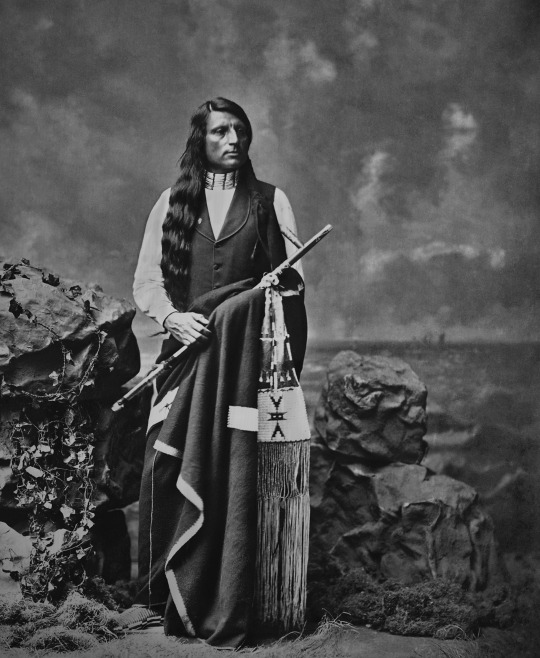
Chief Red Shirt - Oglala Sioux

Red Shirt (Oglala Lakota: Ógle Ša in Standard Lakota Orthography) (1847–1925) was an Oglala Lakota chief, warrior and statesman.
Chief Red Shirt camped with Crazy Horse and the rest of the Oglala at the Little Big Horn. The Oglala camp was next to the Cheyenne camp near the bottom of what is now known as Last Stand Hill. Red Shirt supported Crazy Horse during the Great Sioux War of 1876-1877 and the Ghost Dance Movement of 1890, and was a Lakota delegate to Washington in 1880.

Dakota delegation to Washington, D.C., Left to right, Red Dog, Little Wound, John Bridgeman (interpreter), Red Cloud, American Horse and Red Shirt. June, 1880
Chief Red Shirt wore his hair to represent peace and war. One side of his hair was wrapped to indicate he was ready for peace, the other side was worn loose indicating his readiness for war. This was done when he traveled with Chief Red Cloud to Washington D.C.

Red Shirt surrendered with Crazy Horse in 1877. After the surrender he moved to an area that is now known as Red Shirt, SD. Red Shirt was one of the first Wild Westers with Buffalo Bill's Wild West and a supporter of the Carlisle Native Industrial School. Red Shirt became an international celebrity Wild Westing with Buffalo Bill's Wild West and his 1887 appearance in England captured the attention of Europeans and presented a progressive image of Native Americans.
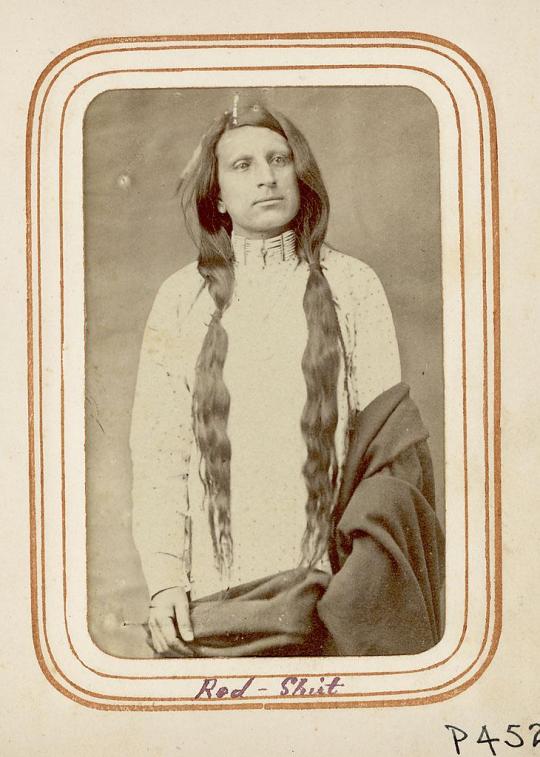

Red Shirt in Buffalo Bill's Wild West Show
On March 31, 1887, Chief Red Shirt, Chief Blue Horse and Chief American Horse and their families boarded the SS State of Nebraska in New York City, leading a new journey for the Lakota people when they crossed the ocean to England on Buffalo Bill's first international to perform at the Golden Jubilee of Queen Victoria and tour through Birmingham, Salford and London over a five–month period. The entourage consisted of 97 Indians, 18 buffaloes, 2 deer, 10 elk, 10 mules, 5 Texas steers, 4 donkeys, and 108 horses. Buffalo Bill treated Native American employees as equals with white cowboys. Wild Westers received good wages, transportation, housing, abundant food and gifts of clothing and cash from Buffalo Bill at the end of each season.
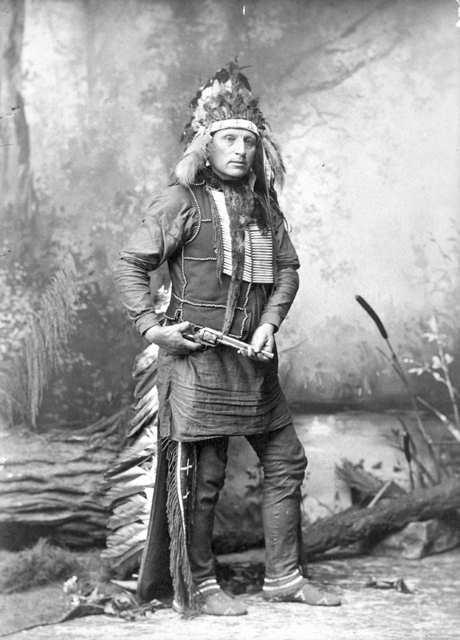
Photo from London - Red Shirt was lionized by the British press and his handsome features and stately bearing caused reporters to hang on his every word. Queen Victoria adored Chief Red Shirt and reportedly said after meeting him, "I know a real prince when I see him."

William F. "Buffalo Bill" Cody, Rosa Bonheur, Chief Rocky Bear, Chief Red Shirt, William "Broncho Bill" Irving, Roland Knoedler, and Benjamin Tedesco in front of Cody's Tent at the Paris Exposition Universelle - 1889
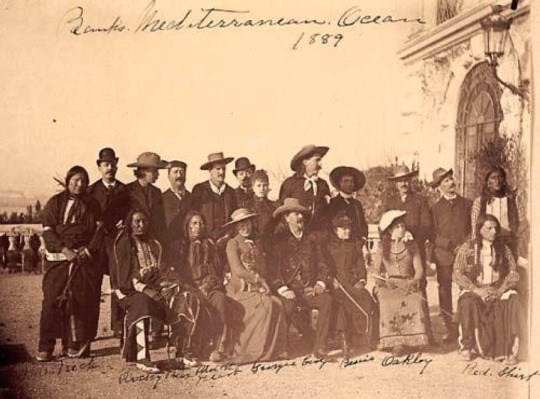
Another photo of Red Shirt - this time with Cody's company somewhere in Italy, 1890. Front row: No Neck, Rocky Bear, Black Heart, Georgie Duffy, Cody, Bessie Farrell, Annie Oakley, Red Shirt. Others in back row: Buck Taylor (fifth from right), Johnny Baker (fourth from right), Carter Couturier, advertising agent(?) (second from right), Has No Horses (far right)


Chief Red Shirt's rifle & scabbard.🔼 - Details 🔽




Chief Red Shirt was a Wild Wester for over thirty years - St. Louis World's Fair, 1904.
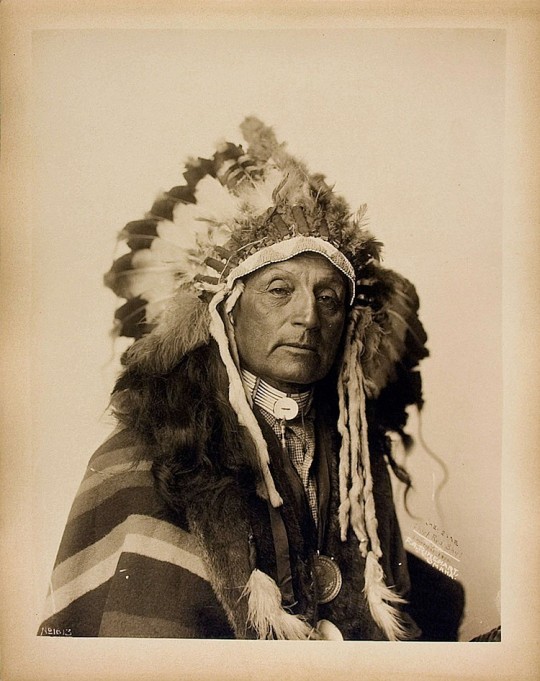
Chief Red Shirt (Ógle Ša) - 1847–1925
#indigenous#Sioux#native american#red shirt#Chief Red Shirt#buffalo bill#queen victoria#crazy horse#Little Big Horn#Oglala#ghost dance movement#lakota sioux#lakota#ogle sa#wild wester
299 notes
·
View notes
Photo

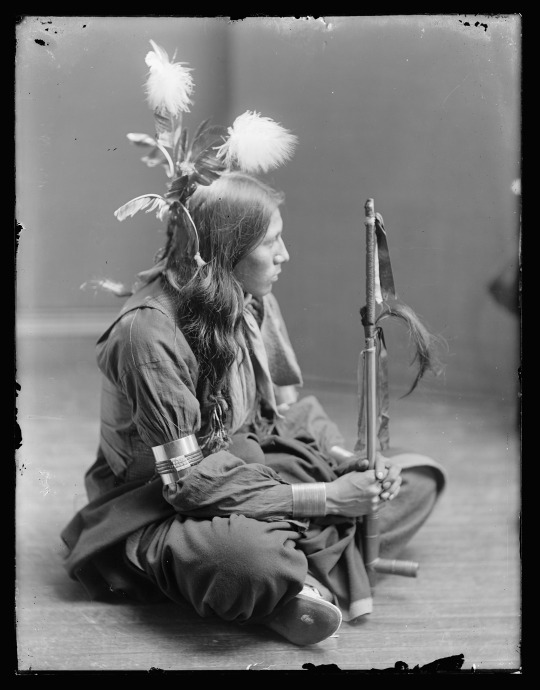


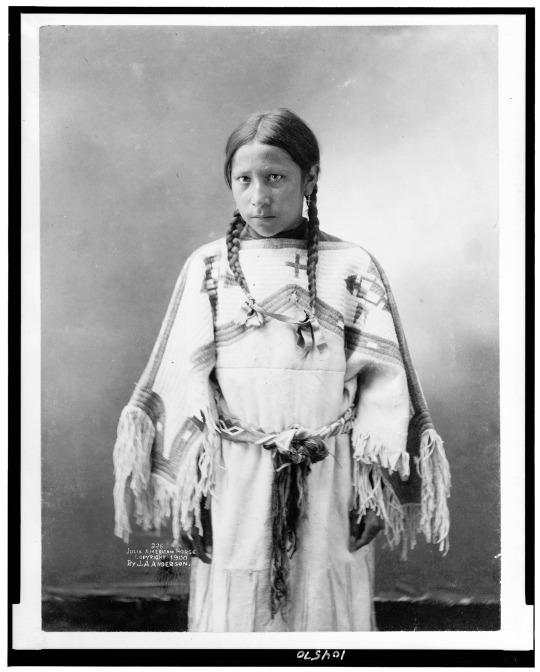
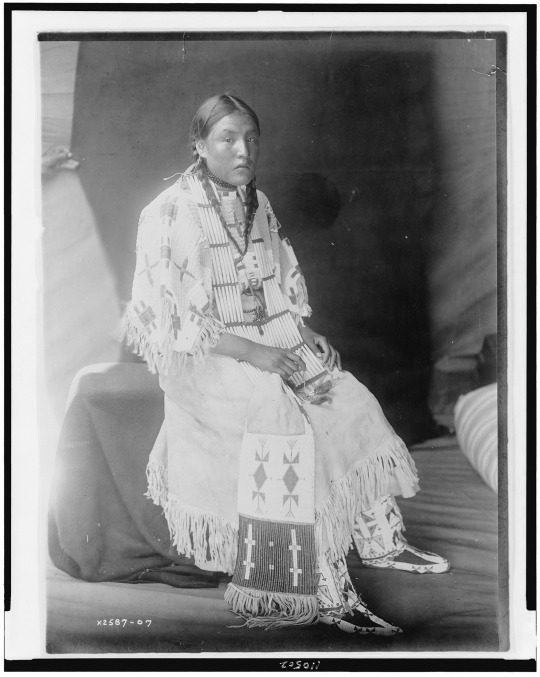
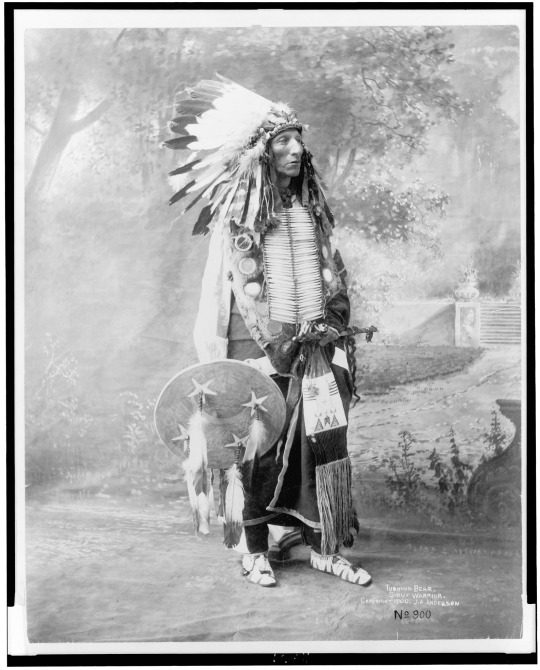

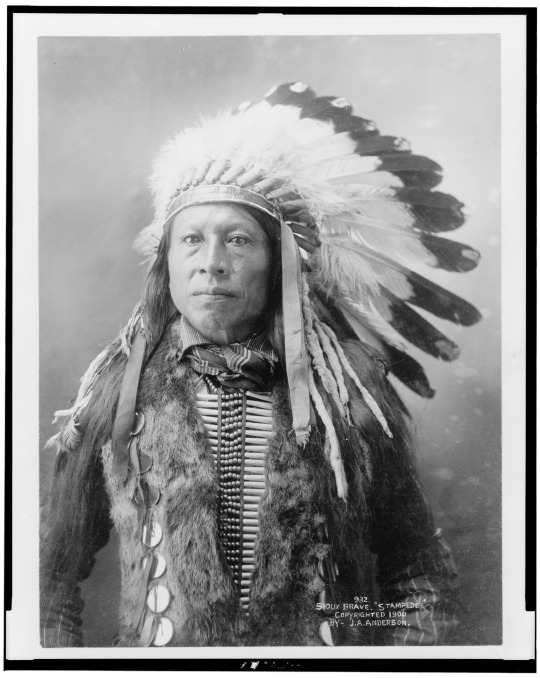
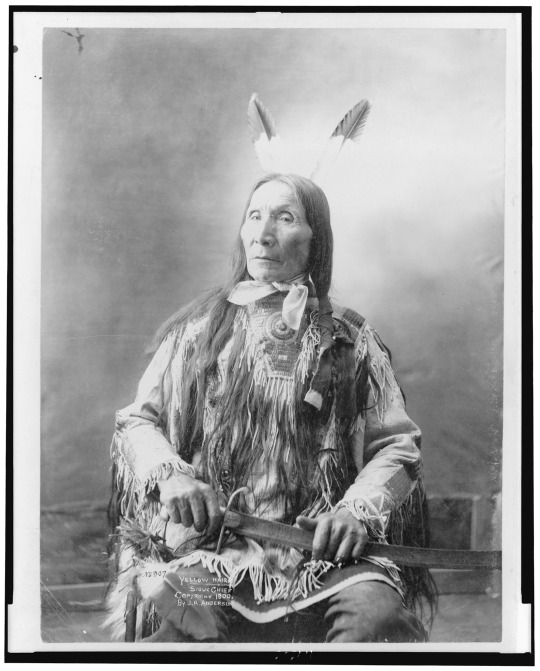
November is National American Indian Heritage Month and we at OUAT have chosen to celebrate the Dakota Sioux with a series of portraits and sceneries from ca 1899 -1910.
From top to bottom:
Iron White Man.
William Frog.
Susie Shot in the Eye.
Crow Dog.
Julia American Horse.
Red Elk Woman.
Turning Bear.
[Unknown] Sioux child.
Stampede.
Chief Yellow Hair.
See more from our Native American collection here.
676 notes
·
View notes
Text

12/31/23
(One last painting for the year.)
#art#painting#scientific illustration#oil painting#paleontology#oil on canvas#paleoart#original art#dinosaur#fine art#nature#dinosaurs#artwork#tyrannosaurus rex#tyrannosaurus#Sue the T. rex#Sue#Sioux#field museum#black hills#south dakota
64 notes
·
View notes
Text
The Black Hills of South Dakota have been central to the Lakota people’s #culture for over 10,000 years. To walk through them is to walk through native American history.
118 notes
·
View notes
Text

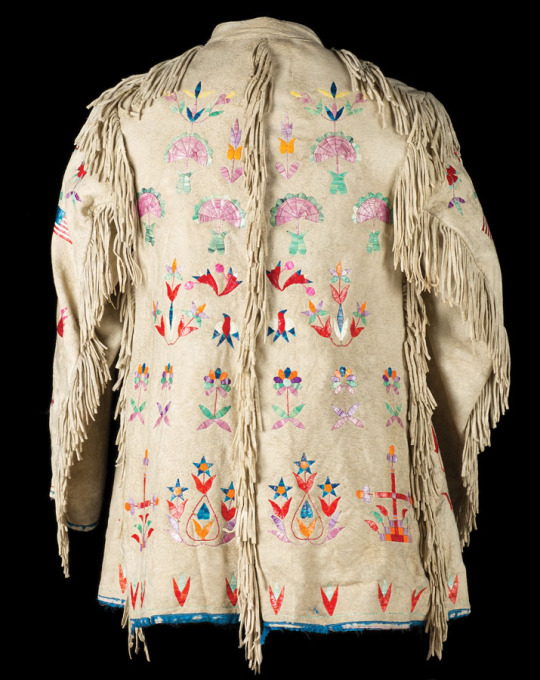
Sioux Quilled Jacket
A very seldom seen example of an early Scout jacket. With finely executed quilled designs in bright colorful designs and symbols including birds, flowers, crosses and crossed American flags on the sleeves. Trimmed in fringe, with remnants of blue silk trim at the edges. Cotton lining. Wonderful fringe along the arms, shoulders and down the center of the back. Circa late 19th century, 30" tall, 15" wide, 22" sleeves. Front shows fading to quillwork, but the back is bright and beautiful.
Old West Events
262 notes
·
View notes
Photo

Sioux woman's dress, 1920s-50s.
333 notes
·
View notes
Text

Edward S Curtis Native American 1900s
Little Hawk - Brule Sioux - c. 1907
50 notes
·
View notes
Photo

Red Cloud
Red Cloud (Makhpiya-luta, l. 1822-1909) was an Oglala Lakota Sioux chief, statesman, and military strategist who became the only Native American leader of the Plains Indians to win a war against the United States. Red Cloud's War (1866-1868) forced the US government to agree to Native demands without stipulation, establishing the Great Sioux Reservation in 1868.
Continue reading...
281 notes
·
View notes
Photo
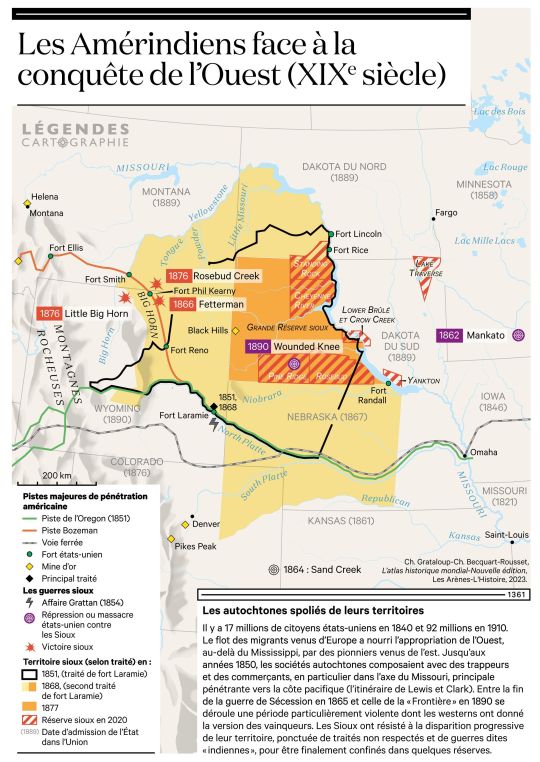
The dispossession of Sioux territory, 19th century.
From the new edition of Atlas historique mondial by C. Grataloup and Ch. Becquart-Rousset.
by LegendesCarto
56 notes
·
View notes
Text

Hinhan Duta (Scarlet Owl) or Hin-Kan-Du-Ta (Red Owl), Dakota, in Partial Native Dress and Holding War Club - Shindler - 1858
25 notes
·
View notes
Text



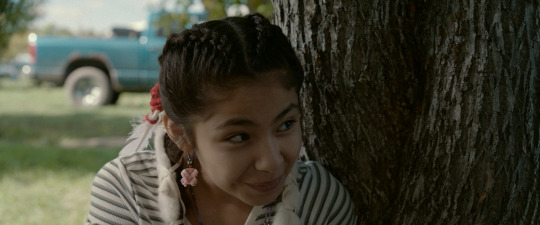
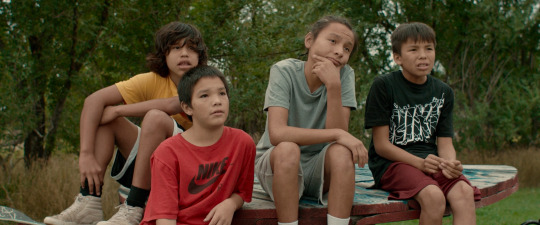

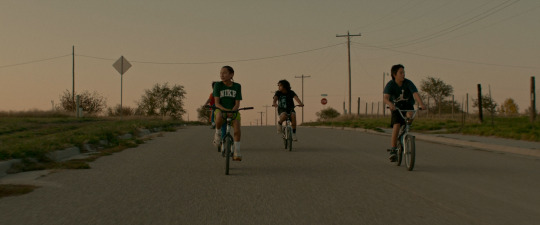
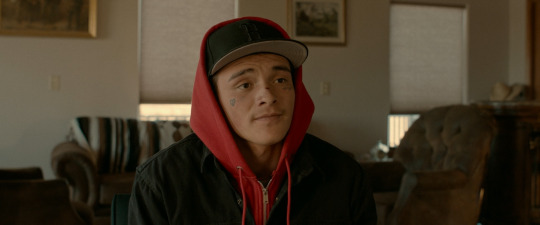


War Pony (Gina Gammell & Riley Keough, 2023)
#war pony#gina gammell#riley keough#oglala lakota#pine ridge#native people#sioux#female directors#female directed films#female filmmakers#female film directors#women in film#tongva people#oceti sakowin
81 notes
·
View notes
Text

Lakota - Woman's legging moccasins
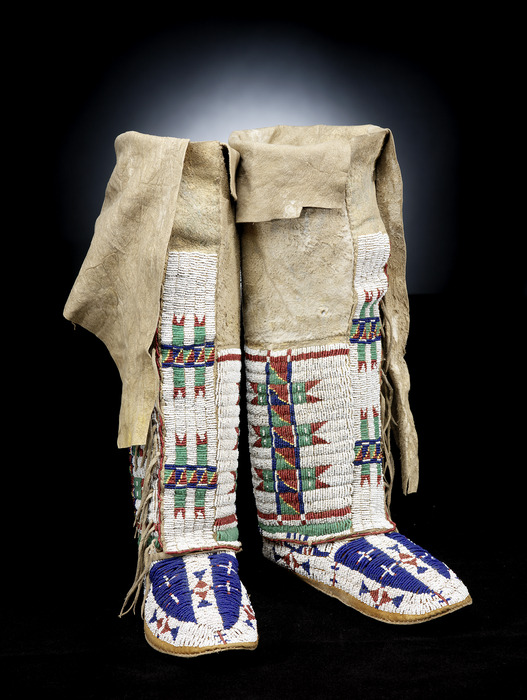
Sicangu Lakota - Woman's legging moccasins
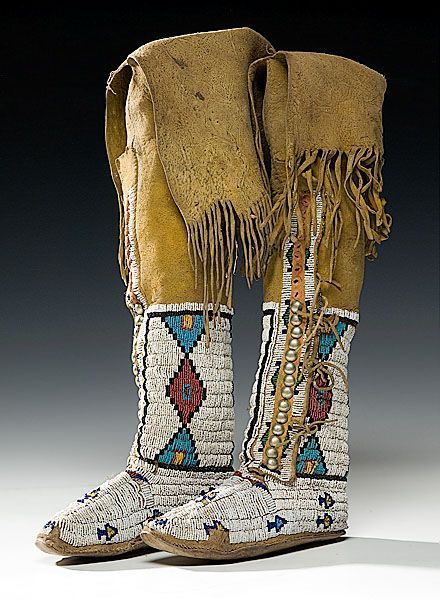
Woman's legging moccasins

Plains Cree moccasins, c. 1890

Pair of Sioux heavily beaded moccasins with leggings
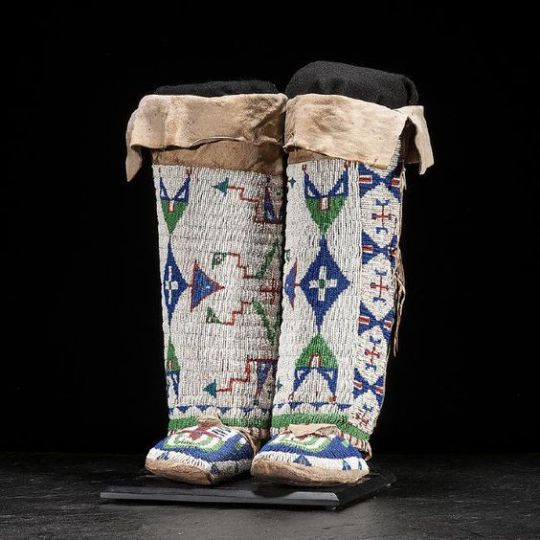
Arapaho Beaded Hide Moccasins With Matching Leggings
105 notes
·
View notes